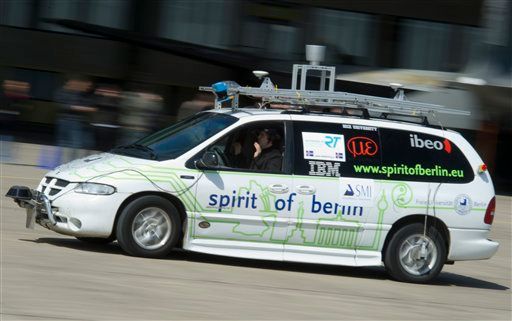Sure, there are all kinds of technologies out there that can make driving a whole lot easier. Everyone was pretty happy when cruise control came out, impressed when automakers were able to provide a backup sensor for cars, and ecstatic when the navigation systems guided us to where we needed to go. This invention, however, can cause people to either be elated or scared to death. We are talking about being able to drive a car with just your eyes.
German researchers have discovered a new technology called eyeDriver that will allow a vehicle to respond to the driver’s eye movement steering the car in whatever direction the driver’s eyes take it. This is done mounting cameras to a bicycle helmet (chosen due to its ergonomic shape). One camera is pointed to the road while the other is fixed on the driver’s eyes reading their every instruction. Raul Rojas, an artificial intelligence researcher at Berlin's Free University, and his team were able to demonstrate this phenomenon at an airport in Germany last Friday using a Dodge Caravan->ke2783 decked out in lasers, cameras, and scanners.
Hit the jump for the full story.
So far, the eyeDriver can operate up to speeds of 31mph, but Rojas wants to see that number increase to about 60mph with the final test being operating while pedestrians and other obstacles are on the road. We don’t want to be there when those tests go under way!
With the growing rate of cell phone usage and the occasional staring at the hottie-on-the-side-of-the-road, Rojas has even thought about the “distracted” drivers. With this obstacle comes the use of the lasers, cameras, and scanners previously mentioned. The use of these electronics makes it possible for the car to drive itself.
"The car can do everything. It can drive autonomously or it can be guided by a driver's eyes," Rojas said. The only assistance needed by the automobile would be guidance at intersections. The driver just needs to look in the direction he wants to go for a few seconds and the car will respond.
Although, this technology seems to be a little scary, there’s not much to worry about just yet. The researchers are still far from their eventual goal of making this technology road-safe and we figure, by then, they would have to have figured out all of the kinks. And like we said, we just don’t want to be around if anything goes wrong in the process.

